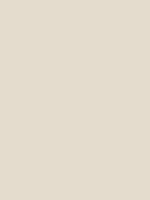#e4dccd Color Information
In a RGB color space, hex #e4dccd is composed of 89.4% red, 86.3% green and 80.4% blue. Whereas in a CMYK color space, it is composed of 0% cyan, 3.5% magenta, 10.1% yellow and 10.6% black. It has a hue angle of 39.1 degrees, a saturation of 29.9% and a lightness of 84.9%. #e4dccd color hex could be obtained by blending #ffffff with #c9b99b. Closest websafe color is: #cccccc.
-
- R 89
- G 86
- B 80
-
- C 0
- M 4
- Y 10
- K 11
● #e4dccd color description : Light grayish orange.
#e4dccd Color Conversion
The hexadecimal color #e4dccd has RGB values of R:228, G:220, B:205 and CMYK values of C:0, M:0.04, Y:0.1, K:0.11. Its decimal value is 14998733.
| Hex triplet | e4dccd | #e4dccd |
|---|---|---|
| RGB Decimal | 228, 220, 205 | rgb(228,220,205) |
| RGB Percent | 89.4, 86.3, 80.4 | rgb(89.4%,86.3%,80.4%) |
| CMYK | 0, 4, 10, 11 | |
| HSL | 39.1°, 29.9, 84.9 | hsl(39.1,29.9%,84.9%) |
| HSV (or HSB) | 39.1°, 10.1, 89.4 | |
| Web Safe | cccccc | #cccccc |
| CIE-LAB | 88.011, 0.191, 8.33 |
|---|---|
| XYZ | 68.606, 72.089, 68.055 |
| xyY | 0.329, 0.345, 72.089 |
| CIE-LCH | 88.011, 8.332, 88.686 |
| CIE-LUV | 88.011, 5.516, 12.357 |
| Hunter-Lab | 84.905, -4.351, 11.91 |
| Binary | 11100100, 11011100, 11001101 |
Color Schemes with #e4dccd
Alternatives to #e4dccd
Below, you can see some colors close to #e4dccd. Having a set of related colors can be useful if you need an inspirational alternative to your original color choice.
#e4dccd Preview
This text has a font color of #e4dccd.
<span style="color:#e4dccd;">Text here</span>This paragraph has a background color of #e4dccd.
<p style="background-color:#e4dccd;">Content here</p>This element has a border color of #e4dccd.
<div style="border:1px solid #e4dccd;">Content here</div>.text {color:#e4dccd;}.background {background-color:#e4dccd;}.border {border:1px solid #e4dccd;}Shades and Tints of #e4dccd
A shade is achieved by adding black to any pure hue, while a tint is created by mixing white to any pure color. In this example, #010101 is the darkest color, while #f9f7f3 is the lightest one.
-
#010101
#010101rgb(1,1,1) -
#0e0b07
#0e0b07rgb(14,11,7) -
#1a160e
#1a160ergb(26,22,14) -
#272115
#272115rgb(39,33,21) -
#342c1c
#342c1crgb(52,44,28) -
#413623
#413623rgb(65,54,35) -
#4d412a
#4d412argb(77,65,42) -
#5a4c31
#5a4c31rgb(90,76,49) -
#675638
#675638rgb(103,86,56) -
#74613e
#74613ergb(116,97,62) -
#806c45
#806c45rgb(128,108,69) -
#8d764c
#8d764crgb(141,118,76) -
#9a8153
#9a8153rgb(154,129,83)
-
#a68c5a
#a68c5argb(166,140,90) -
#ad9567
#ad9567rgb(173,149,103) -
#b49e74
#b49e74rgb(180,158,116) -
#bba781
#bba781rgb(187,167,129) -
#c2af8d
#c2af8drgb(194,175,141) -
#c8b89a
#c8b89argb(200,184,154) -
#cfc1a7
#cfc1a7rgb(207,193,167) -
#d6cab4
#d6cab4rgb(214,202,180) -
#ddd3c0
#ddd3c0rgb(221,211,192) -
#e4dccd
#e4dccdrgb(228,220,205) -
#ebe5da
#ebe5dargb(235,229,218) -
#f2eee6
#f2eee6rgb(242,238,230) -
#f9f7f3
#f9f7f3rgb(249,247,243)
Tones of #e4dccd
A tone is produced by adding gray to any pure hue. In this case, #dbd9d6 is the less saturated color, while #ffe4b2 is the most saturated one.
-
#dbd9d6
#dbd9d6rgb(219,217,214) -
#dedad3
#dedad3rgb(222,218,211) -
#e1dbd0
#e1dbd0rgb(225,219,208) -
#e4dccd
#e4dccdrgb(228,220,205) -
#e7ddca
#e7ddcargb(231,221,202) -
#eadec7
#eadec7rgb(234,222,199) -
#eddfc4
#eddfc4rgb(237,223,196) -
#f0e0c1
#f0e0c1rgb(240,224,193) -
#f3e1be
#f3e1bergb(243,225,190) -
#f6e1bb
#f6e1bbrgb(246,225,187) -
#f9e2b8
#f9e2b8rgb(249,226,184) -
#fce3b5
#fce3b5rgb(252,227,181) -
#ffe4b2
#ffe4b2rgb(255,228,178)
Color Blindness Simulator
Below, you can see how #e4dccd is perceived by people affected by a color vision deficiency. This can be useful if you need to ensure your color combinations are accessible to color-blind users.
